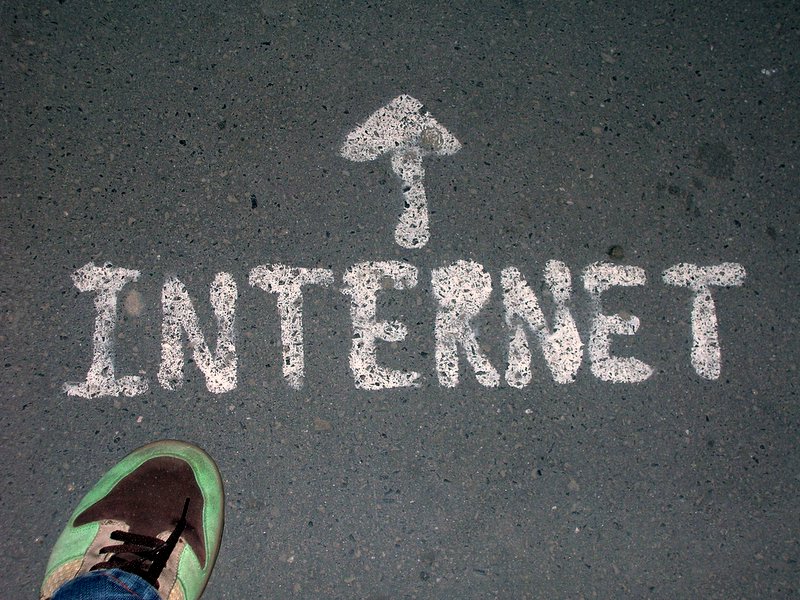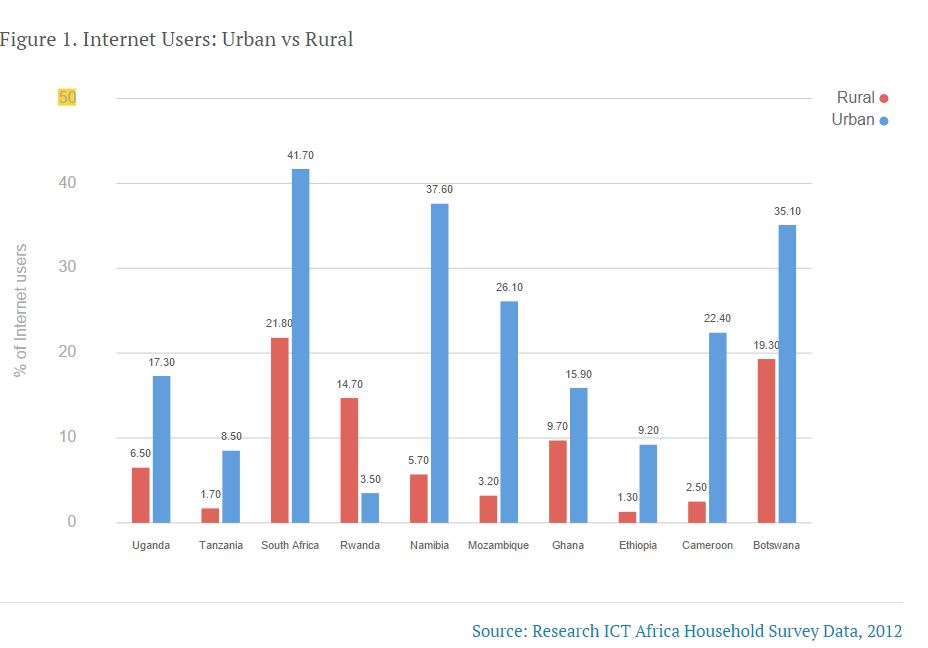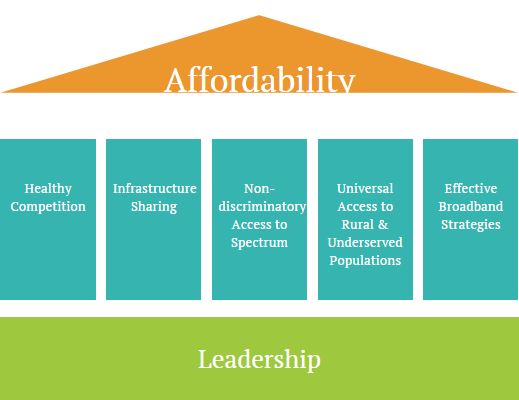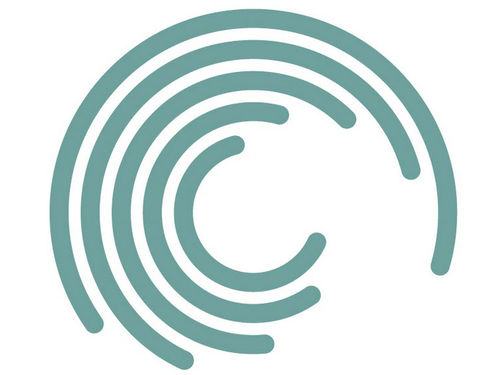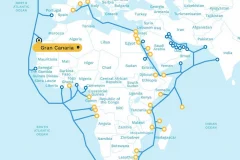The human race has undoubtedly enjoyed the benefits of using the internet. From health, education, sports, business, defense, etc, it has solved one human problem or the other. Nigeria, especially, has witnessed an increasing number of people making use of the internet in recent years -especially in the social media space.
According to a study conducted by Alliance for Affordable for Internet (A4Ai) in 2014, Rwanda, Nigeria, Morocco, Uganda and Kenya are among the countries in the “developing” economies that are leading the pack in terms of internet access and affordability. Sadly however, about 4.2 billion people (or 60%) of the world’s population –majorly in the developing world- also do not have access to the internet.
A4AI undertook this study in a bid to find out why some countries (like Rwanda, Nigeria et al) have succeeded in making internet access more accessible, universal and affordable and what others can do to catch-up. As a follow up, the agency identified some of the challenges causing the chasm in countries lagging behind and proffered policies and regulatory framework that can lead to a more affordable internet access.
The 51 countries researched on were scored using the “Affordability Index”, the index scored each country on a scale of 0-100, basing it on usage rates/current penetration and policy/regulatory environment in such countries, which could lead to further progress. The affordability index is divided into the following sub-indices: (1) Infrastructure sub-index and (2) Access sub-index.
The infrastructure sub-index measures the current extent of infrastructure deployment and operations, alongside the policy and regulatory frameworks in place to incentivise and enable cost-effective investment in future infrastructure expansion. While access sub-index, measures current broadband adoption rates and the policy and regulatory frameworks in place to encourage growth and ensure provision of affordable and equitable access.
In the words of the research agency: “This year, Costa Rica tops the overall rankings, followed by Colombia, Turkey, Malaysia and Peru — all middle-income countries. Rwanda secures the top spot among developing countries, followed by Nigeria, Morocco, Uganda and Kenya.”
Furthermore, the report stated that people who are not connected, simply can’t afford it. Cost of broadband in these countries reportedly, hovers around 40% of the monthly income of an average citizen across the 51 countries researched in this study; while the price for an entry-level mobile broadband is a little above 10% of citizen’s monthly income.
- From the 51 countries surveyed, approximately 2 billion people earn less than $2 a day (or $60/month) –World Bank data.
- Depending on where they live, such people spend in the range of 5.5% and 114.5% of their average monthly income to access entry-level broadband package.
- Across board, women were far less likely able to access, adopt and benefit from a broadband connection than men due to lower income disparity
- People in rural areas are unable to access the internet due to lower income and challenges associated with infrastructure deployment.
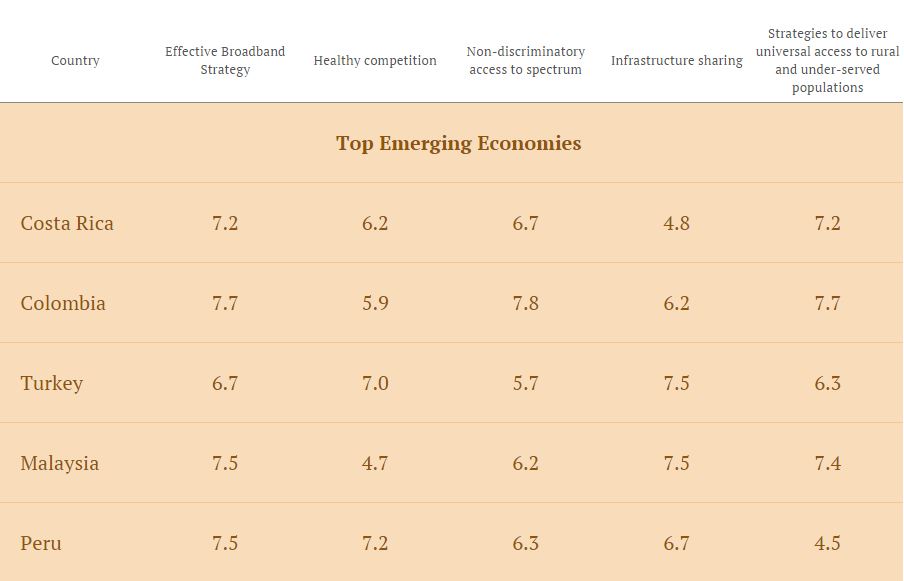
Additionally, the report analysed the relationship between policies, regulations and the affordability environment in each country and identified common success factors: effective broadband strategies, enhanced competition, efficient spectrum competition, infrastructure sharing models and universal access to affordable internet services.
Affordability Index – Emerging Economies and Developing Countries
The index ranked countries based on economic development levels, amazingly, the countries classified by World Bank as “emerging economies” top the chart. These countries have not only been pursuing policy and regulatory frameworks that promote healthy and competitive markets for infrastructure expansion, but have been creating incentives to stimulate demand for broadband services.
From the table above, it is evident that Nigeria –a developing economy- comes in second to Rwanda in the affordability index ranking and even surpasses some other emerging economies like South Africa, Mexico, Thailand and Tunisia. This development, according to the report, is connected to the backbone infrastructure which has improved significantly over the past decade.
For instance, the Nigerian Communication Commission (NCC), plans to award seven licenses to regional infrastructural companies to extend broadband infrastructure nationally –e.g. MainOne and IHS communications, as reported by TechCabal weeks back.The nascent “Smart States” initiative, which sees states committing to reduce the cost of broadband access by reducing taxation and simplifying regulation, is also a positive step.
Nigeria’s mobile broadband penetration rate stands at just 10% — despite the fact that close to 40% of Nigerians use the Internet — and the government has put in place policies to increase this penetration level to 30% by 2018. To increase the ability of mobile operators to serve more Nigerians, plans were recently announced to auction spectrum in the 2.6 GHz band .
Nevertheless, with this development, the report indicated that three groups are least likely to be able to access affordable internet: those living in extreme poverty, women and rural dwellers.
People living in extreme poverty are least likely to access affordable internet. Despite the 5% of GNI per capita target the UN broadband commission has set for entry-level internet access, only 23 out of the 51 countries have met this target on an aggregate basis.
Women also are far likely to be able to access the internet affordably than men, albeit, the gap varies from region to region. Entry-level mobile broadband costs at least 8% of women’s GNI per capita –based on analysis of gender pay gap and ability to afford internet services worldwide- compared with 5.6% for the average Nigerian.
Research study by ICT Africa, encompassing a dozen African countries, discovered that urban and rural divide is quite weighty among internet users. From 23.8% of the population who are internet users in Uganda, 17.3% were based in urban areas, compared with just 6.5% in rural areas.
Finally, this section discusses the policies, regulations and programmes needed to stimulate affordable internet access. Four factors identified that drives progress toward an affordable internet access across the globe are effective broadband services, healthy competition, Non-discriminatory access to spectrum, infrastructure sharing and strategies to deliver universal access to rural and under-served populations.
Countries, such as Nigeria, that top the affordability index have prioritized some of the key drivers of affordability by making progress in areas such as regulatory independence, increasingly transparent policy-making processes and regulatory capacity.
Moral of this research is aptly put by the agency, and was released six months prior to the last meeting of the UN general assembly, as they gathered to discuss sustainable development goals (SDG) last year: “To enshrine affordable access to broadband Internet in the sustainable development goals, and require all stakeholders to work toward achieving affordable, universal access in the coming years through a blend of infrastructure investment and policy and regulatory reform”.
The Alliance for Affordable Internet is a global coalition working to make broadband affordable for all. The information above is not “exhaustive”, please go here to read the full report.
Photo Credit: transCam via Compfight cc, A4Ai









